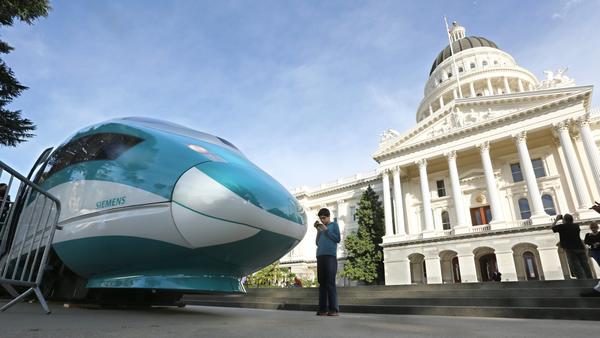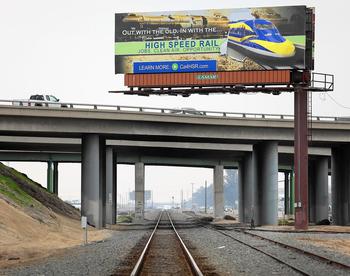California High-Speed Rail
The California High-Speed Rail (HSR) project carried a $40 billion price tag when first approved by voters in 2008. Eight years later, the government authority running the project estimated it will cost $64 billion. A revised business plan issued in March 2018 upped the cost to $77 billion and pushed the project back five years to 2033.
As outlined in the “Safe, Reliable High-Speed Passenger Train Bond Act for the 21st Century,” the HSR project will build approximately 800 miles of track up and down the state, connecting together most of the state’s large cities with up to 24 different stations.
Phase 1 promises a 2-hour and 40-minute ride between San Francisco’s Transbay Terminal and Los Angeles’ Union Station.
The project is expected to open in legs. The first, connecting San Jose to the Central Valley, is scheduled to begin passenger service in 2025. The second leg – expected to open in 2029 – will build out tracks from San Jose to San Francisco’s Transbay Terminal, including a Peninsula stop in Millbrae; and south from Bakersfield to Anaheim, with stops in Palmdale, Downtown Los Angeles, and at Burbank Airport.
The proposed timeline on the later extensions of the project aren’t as definite, but the state plans to add a 110-mile Sacramento extension, connecting to Modesto and Stockton on its way, and a 167-mile segment that snakes east from Los Angeles through the San Gabriel Valley to the Inland Empire, and eventually down south to San Diego.
The High-Speed Rail Authority officially broke ground on the project in Fresno in 2015. Since then, construction crews have been working on a 119-mile segment of track in the Central Valley. Recently the rail authority reported $1.7 billion in cost overruns on the Central Valley segment.
As a measure to reduce project costs, the rail authority says it may abandon plans to build multi-million-dollar safety barriers near freight train tracks to prevent crashes and reduce the train’s speed in urban areas instead.
The California Legislature’s Audit Committee recently voted unanimously to audit the HSR Authority’s budget and expenditures.
Angelica Obioha, Infrastructure-Info Staff




